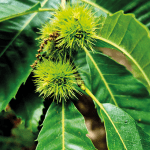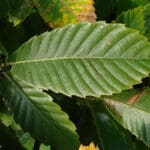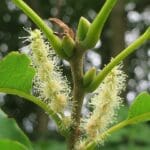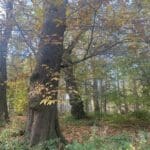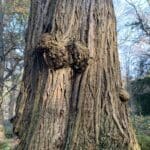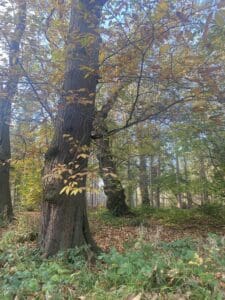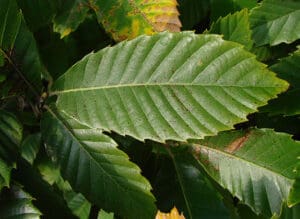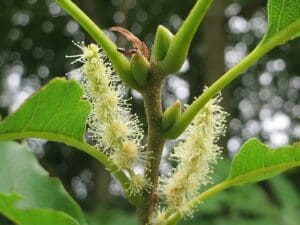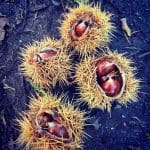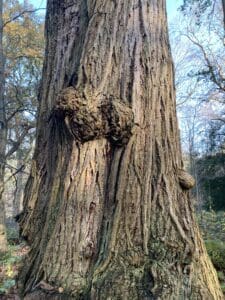Sweet Chestnut / Edible / Autumn
Sweet chestnut is a large deciduous tree, reaching up to 30 m when fully grown.
Leaves
The leaves are about 16–28 cm long, 5–9 cm wide and oblong with a pointed tip and a toothed edge. The leaves are quite glossy.
Flowers
Long, yellow catkins.
Fruit
Shiny, red-brown fruits wrapped in a green, very spiky case.
Bark
Grey-purple and smooth, and develops vertical fissures which spiral up the tree with age.
Habitat
Sweet chestnut is native to southern Europe, western Asia and North Africa. It is thought to have been introduced to the British Isles by the Romans and today can be found commonly throughout the UK, especially in parts of southern England.
Known hazards
None known
Could be Confused with
Horse chestnut or conker tree (Aesculus hippocastanum) which has similar nuts, but those of the sweet chestnut are smaller and found in clusters. The leaves are completely different, with sweet chestnut having single, long, serrated leaves and horse chestnut having hand-shaped leaves with deeply divided lobes.
Edible Uses
The seeds/nuts can be roasted and used in a large variety of dishes including cakes and stuffing.
There’s a fantastic trick when picking the nuts out of the shells, if you stand on the encased sweet chestnuts with 2 feet and twist your feet, a bit like doing the twist, you can open up the case and easily remove the nuts without getting spiked by the spiky outside 🙂
Notes on Herbal uses
Sweet chestnuts are a rich source of vitamins C and B and minerals including magnesium, potassium and iron.
Extra notes from the Foragers
The oldest known sweet chestnut tree grows on Mount Etna in Italy and is said to be around 190 feet in circumference, it is thought to be around 2000-4000 years old.
Sweet chestnut is considered the best wood for burning as well. As a relatively dry wood which catches easily but burns slowly and smoke free it should be stacked correctly to dry for at least a year before burning




